We all experience moods and emotions every day. We may not always be aware of them, but they are there. In this article, we will explore what they are, the difference between them, and how they are linked. We will also hear from some experts in the field to get their take on this fascinating topic. By the end of this article, you will have a greater understanding of moods and emotions and be able to apply that knowledge in your own life!
Contents
Understanding The Terms
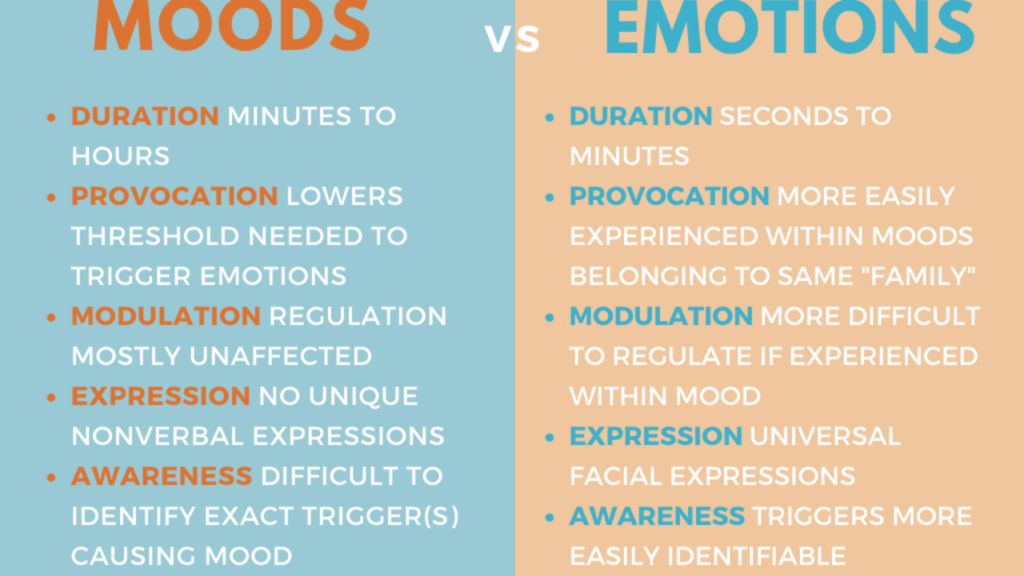
Moods
They are relatively long-lasting, general feelings that color our perceptions and attitudes. Moods are not as intense as emotions. But they can still affect how we think, feel, and behave. There are four main types of moods:
- Neutral moods: These are neither positive nor negative; they are simply apathetic. People in a neutral mood may not feel much of anything at all.
- Positive moods: These include happiness, joy, love, and contentment. People in a positive mood tend to be more optimistic and have a generally good outlook on life.
- Negative moods: These include sadness, anger, anxiety, and fear. People in a negative mood are more likely to see the world in a pessimistic light and experience more stress.
- Mixed moods: These occur when someone experiences both positive and negative emotions simultaneously. For example, they may feel happy one moment and sad the next, or they may be angry and fearful at the same time.
Emotions
Emotions are intense, short-lived feelings that come in response to specific events or experiences. Unlike moods, emotions tend to be easier to identify and pinpoint. There are six main types of emotions:
- Happiness: This includes joy, love, pride, and contentment.
- Sadness: This includes grief, loneliness, and regret.
- Anger: This includes hatred, frustration, and envy.
- Anxiety: This includes fear, dread, and insecurity.
- Surprise: This includes astonishment, curiosity, and delight.
- Disgust: This includes loathing, repulsion, and contempt.
Comparing Moods And Emotions
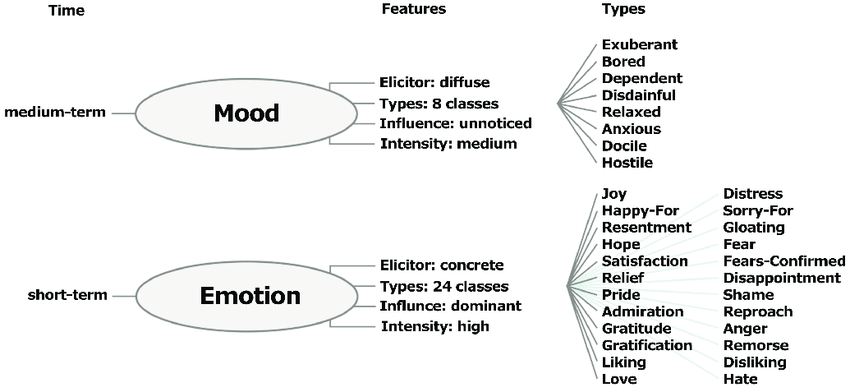
Are They Synonymous
They are not the same things, but they are closely related.
- Moods tend to be more long-lasting; while emotions are usually shorter and more intense.
- Moods also generally affect our overall attitude; whereas emotions are usually in response to a specific event or experience.
The Difference Between Them
Moods last longer than emotions and are not as intense. Additionally, moods generally affect how we think, feel, and behave. While emotions are more likely to be physical reactions to specific events.
Which Is Permanent, Which Is Changing
- Moods are relatively long-lasting, while emotions tend to be short-lived.
- However, both moods and emotions can change over time.
Which Exercises More Influence on Personality
Moods generally have a greater influence on personality than emotions. This is because moods are more long-lasting and affect how we think, feel, and behave.
Finding The Link
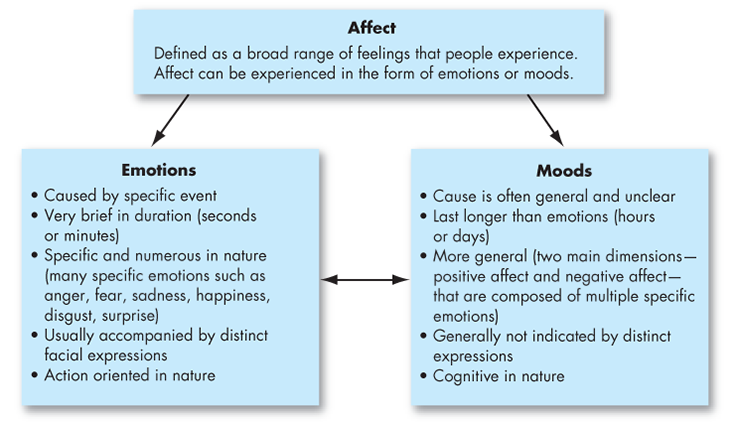
They are codependent in that they both affect our thoughts, feelings, and behaviors. However, they are not the same thing.
Effects of Mood And Emotions
The effects of mood and emotions can be felt on the mind and body and evident on body:
Mind
Both can affect our thoughts, feelings, and behaviors. For example, if we are in a good mood, we may be more likely to see the world in a positive light and be more optimistic.
Furthermore, research has shown that people in a positive mood are more likely to be creative and productive. Conversely, if we are in a bad mood, we may be more likely to see the world in a negative light and be more pessimistic.
Body
Both can also affect our physical health.
- For example, if we are feeling sad or anxious, we may experience muscle tension, headaches, or stomach problems.
- Additionally, anger can lead to physical health problems such as heart disease.
Behavior
Both can also affect our behavior. For example, if we are in a good mood, we may be more likely to smile, laugh, and be outgoing. However, if we are in a bad mood, we may be more likely to withdraw from others and be less social.
NOTE: How moods and emotions affect the mind and body is still being studied. However, we do know that both can have a significant impact.
Listing Mood Disorders
Several mood disorders can affect our moods and emotions.
Some of the most common mood disorders include:
Depression: This is a serious mental illness that causes people to feel sad, hopeless, and worthless for extended periods.
Anxiety Disorders: These are mental illnesses that cause people to feel extremely anxious, stressed, and afraid.
Schizophrenia: This is a mental disorder that causes delusions and hallucinations.
Bipolar Disorder: This is a mental illness that causes people to experience extreme mood swings, from feeling very happy and energetic to feeling very sad and hopeless.
NOTE: There are many other mood disorders, and this is only a small list. If you are experiencing mood changes that persist for more than two weeks, it is important to see a doctor.
Stabilizing Moods And Emotions
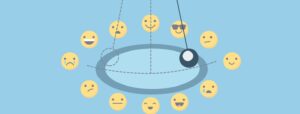
There are several ways to stabilize moods and emotions.
- One way is to identify the thoughts, feelings, and behaviors that are associated with each.
- Another way is to find healthy coping mechanisms for dealing with them.
- Finally, it is important to understand that both moods and emotions are normal and necessary parts of life.
Healthy Coping Mechanisms

Several healthy coping mechanisms can be used to stabilize moods and emotions. Some examples include:
- Exercise: Exercise releases endorphins, which have mood-boosting effects.
- Journaling: Journaling can be a helpful way to express emotions and work through them.
- Yoga or meditation: Yoga and meditation can help to calm the mind and body.
- Spending time with friends and family: Social support can help improve moods and reduce stress levels.
These are several healthy coping mechanisms for dealing with moods and emotions. Some people find that talking about their feelings helps, while others find relief in exercise or meditation. It is important to find what works best for you and practice it regularly.
Hearing From Experts
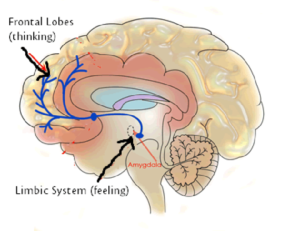
We spoke to a few experts in the field of moods and emotions to get their take on this fascinating topic.
Here is what they had to say:
“Moods are general feelings that color our perceptions and attitudes. While emotions are intense, short-lived feelings that come in response to specific events or experiences. Moods generally have a greater influence on personality than emotions, and both moods and emotions can change over time.”
-Dr. Lynn Bufka, American Psychological Association
“Moods are longer lasting than emotions and tend to be more pervasive affecting multiple dimensions of the self. Emotions are more transitory, although they may be intense.”
-Dr. John Mayer, University of New Hampshire
Semantic Pointer Theory of Emotions
There is another theory about moods and emotions that is worth mentioning. This theory is called the Semantic Pointer Theory of Emotions.
The theory states that emotions are created when the brain assigns meaning to an experience and then creates a mental representation of that experience.
According to this theory, moods act as a pointer or signal that points to our emotional state. In other words, when we experience a mood, it is like a sign that something is going on emotionally.
For example, if we are in a bad mood, it may be because we are feeling sad or anxious. If we are in a good mood, it may be because we feel happy or content.
The Key Message
The SPTE has been used to explain how moods and emotions are related. This theory suggests that moods can help us to understand our emotions. And can act as a way to communicate our emotional state to others.
References
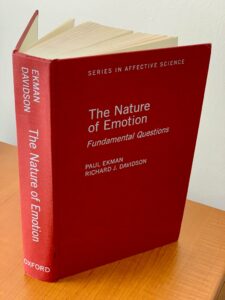
If you are interested in learning more about this topic, there are some great books that you can check out.
Here are a few recommendations:
- The Mood Cure: The Eight-Step Program to Restore Your Emotional Health
- The Emotion Code: How to Release Your Trapped Emotions for Abundant Health, Love, and Happiness
- Emotional Intelligence: Why It Can Matter More Than IQ
Conclusion
Moods and emotions are two concepts that are often used interchangeably. However, they are not the same thing. Moods tend to be longer-lasting and less intense. While emotions are shorter-lived and more intense. Additionally, moods generally have a greater influence on personality than emotions. Both moods and emotions can change over time.
A Word From Therapy Mantra
Your mental health — Your psychological, emotional, and social well-being — has an impact on every aspect of your life. Positive mental health essentially allows you to effectively deal with life’s everyday challenges.
At TherapyMantra, we have a team of therapists who provide affordable online therapy to assist you with issues such as depression, anxiety, stress, workplace Issues, addiction, relationship, OCD, LGBTQ, and PTSD. You can book a free therapy or download our free Android or iOS app.


